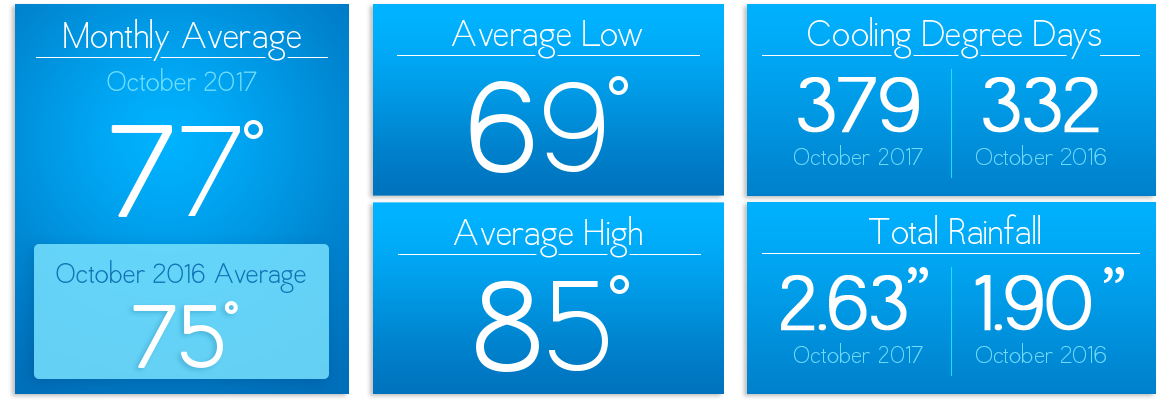Sunshine State Stats, October 2017
October 2017 was slightly warmer than the previous October, so members’ usage and bills may be slightly higher than in October 2016. The average temperature came in at 77°, while October 2016 had an average temperature of 75°. Rainfall in October 2017 came in at 2.63 inches compared to last October at 1.90 inches.
There were 379 cooling degree days and 15 heating degree days for October 2017, while last year there were 332 cooling degree days with 0 heating degree days. The Degree Days are based on how much warmer or cooler the average temperature at a particular location is than 65°F. In other words, if the average temperature is 70 degrees outside on a particular day, there are 5 Cooling Degree Days for that day in that location.

Degree days are measures of how cold or warm a location is. A degree day compares the mean (the average of the high and low) outdoor temperatures recorded for a location to a standard temperature, usually 65°Fahrenheit (F) in the United States. The more extreme the outside temperature, the higher the number of degree days. A high number of degree days generally results in higher levels of energy use for heating or cooling. Learn more about temperature’s effect on energy usage.
November’s temperature forecast is fairly close to normal with an average of 68 degrees. Precipitation is forecast to be higher than normal compared to last year. Consider keeping your heating thermostat between 68 to 70 degrees or lower during the cooler months of the year to lower your energy use.
If you want to check historical usage, log into SmartHub to view past bills and charts. If your usage is high, SECO offers several energy-efficiency tools to help you identify energy wasters. Take the Home Energy Assessment to receive a detailed email tailored to your home’s features and lifestyle. The energy-saving advice will provide low-cost ways to decrease your usage – and your electric bill.
To easily calculate how much energy your appliances, lighting, electronic devices, and other energy-using items in your home consume, use the Energy Estimator. If you want a member of our Energy Services team to come to your home to perform a free energy audit, contact us today to book an appointment.






